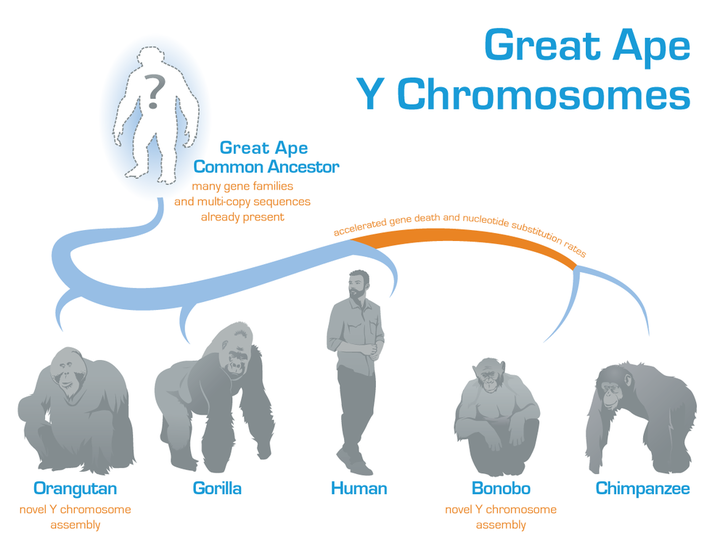Dynamic evolution of great ape Y chromosomes
 Image credit: DANI ZEMBA AND MONIKA CECHOVA, PENN STATE
Image credit: DANI ZEMBA AND MONIKA CECHOVA, PENN STATE
Abstract
The mammalian male-specific Y chromosome plays a critical role in sex determination and male fertility. However, because of its repetitive and haploid nature, it is frequently absent from genome assemblies and remains enigmatic. The Y chromosomes of great apes represent a particular puzzle; their gene content is more similar between human and gorilla than between human and chimpanzee, even though human and chimpanzee share a more recent common ancestor. To solve this puzzle, here we constructed a dataset including Ys from all extant great ape genera. We generated assemblies of bonobo and orangutan Ys from short and long sequencing reads and aligned them with the publicly available human, chimpanzee, and gorilla Y assemblies. Analyzing this dataset, we found that the genus Pan, which includes chimpanzee and bonobo, experienced accelerated substitution rates. Pan also exhibited elevated gene death rates. These observations are consistent with high levels of sperm competition in Pan. Furthermore, we inferred that the great ape common ancestor already possessed multicopy sequences homologous to most human and chimpanzee palindromes. Nonetheless, each species also acquired distinct ampliconic sequences. We also detected increased chromatin contacts between and within palindromes (from Hi-C data), likely facilitating gene conversion and structural rearrangements. Our results highlight the dynamic mode of Y chromosome evolution and open avenues for studies of male-specific dispersal in endangered great ape species.
#Supplementary notes can be added here, including code and #math.